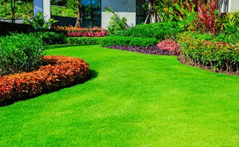Fall is a good time to plant garlic (Allium sativum) if you want large quality cloves next summer. It is best to apply 3 pounds of 10-10-10 fertilizer per 100 square feet and mix into the soil before planting, or fertilize according to a soil test. Plant individual cloves point up and spaced 6 inches apart and 1 to 2 inches deep. The larger the clove planted, the larger the bulb at harvest. Water in well and mulch with straw to conserve soil warmth and encourage good establishment.
Harvest will not occur until next summer. Test dig when the lower 1/3 of the foliage is yellow. If the cloves have segmented, it is time to harvest. If they haven’t segmented, wait another week or two. Elephant garlic (Allium ampeloprasum) should also be planted now. It is a plant with a milder garlic flavor and is actually a closer relative to the leek than to true garlic.
Inchelium Red has an excellent storage life and Chesnok Red is good choice as well. Others you can try include Armenian, Music, Purple Glazer, Carpathian Mountain, Metechi, China Strip, Ajo Rojo, Asian Tempest and Silver White. Kansas has the type of climate that allows us to grow a wide variety of garlic types well.
For more information on growing garlic check out this K-State Garden Hour- https://mediasite.k-state.edu/mediasite/Play/7cf6d3b9d31843a2b7b51c499ee1e57e1d
By: Cassie Thiessen
 If you only fertilize your cool season lawn once a year, September is the best time to do it. Do you know the best practices to keep your lawn looking great? The link below is an excellent cool season lawn care guide and calendar:
If you only fertilize your cool season lawn once a year, September is the best time to do it. Do you know the best practices to keep your lawn looking great? The link below is an excellent cool season lawn care guide and calendar:
 Extension Master Gardeners come from a variety of backgrounds and share a passion for gardening, an enthusiasm for learning, and a commitment to helping others. Master Gardeners have successfully completed basic training in the discipline of horticulture and they share their time and expertise as volunteers in their community to promote Post Rock Extension District’s educational mission.
Extension Master Gardeners come from a variety of backgrounds and share a passion for gardening, an enthusiasm for learning, and a commitment to helping others. Master Gardeners have successfully completed basic training in the discipline of horticulture and they share their time and expertise as volunteers in their community to promote Post Rock Extension District’s educational mission. Tomato color can also be affected by heat. When temperatures rise above 95 degrees F, red pigments don’t form properly, though the orange and yellow pigments do. This results in orange fruit. This doesn’t affect the edibility of the tomato, but often gardeners want that deep red color back.
Tomato color can also be affected by heat. When temperatures rise above 95 degrees F, red pigments don’t form properly, though the orange and yellow pigments do. This results in orange fruit. This doesn’t affect the edibility of the tomato, but often gardeners want that deep red color back. As a melon ripens, a layer of cells around the stem softens so the melon detaches easily from the vine. This is called “slipping” and will leave a dish shaped scar at the point of stem attachment. When harvesting melons, put a little pressure where the vine attaches to the fruit. If ripe, it will release or “slip.”
As a melon ripens, a layer of cells around the stem softens so the melon detaches easily from the vine. This is called “slipping” and will leave a dish shaped scar at the point of stem attachment. When harvesting melons, put a little pressure where the vine attaches to the fruit. If ripe, it will release or “slip.” and turn brown. With some varieties this tendril will need to be completely dried before the watermelon is ripe whereas others it will only need to be in the process of turning brown.
and turn brown. With some varieties this tendril will need to be completely dried before the watermelon is ripe whereas others it will only need to be in the process of turning brown.